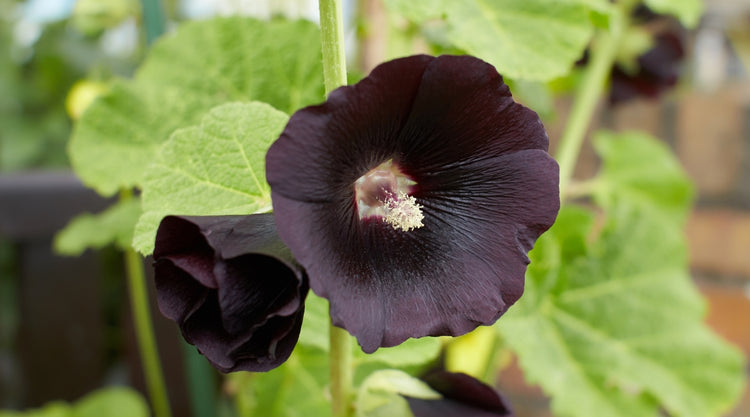Best Plants for Naturally Dyeing Fabric
Posted by The Ichcha Team on 18th Mar 2025
Natural fabric dyes are all around us, obtainable from everyday plants like chamomile, marigold, and even avocado. If you're lucky to live in the countryside with lots of greenery, naturally dyeing textiles can be an exciting hobby to explore your creativity or upcycle old clothes. Even if you don’t have access to fresh plants, simply order some organic flowers from Etsy. But beyond the excitement of creating stunning designs, did you know natural dyes are better for the environment?
Synthetic textile dyes are among the world’s largest pollutants contaminating our waterways. In contrast, plant dyes are free from any lab-synthesized chemicals, making them a safer, eco-friendly alternative. So when you choose to use natural dyes for your clothes, you drastically reduce your environmental footprint.
Natural dyes are dyes extracted from plants, flowers, and minerals. You can use them to dye garments, kitchen fabrics, and even hair.
The big question is: what plants can you source natural dyes from?
Common Plants Used as Natural Fabric Dyes
Many plants can be used to make natural dyes for clothes, including madder, indigo, chamomile, cosmos, calendula, marigolds, dandelions, goldenrod, turmeric, onion skin, avocado skin, red cabbage, hibiscus flower, black beans, berries, smooth sumac, and hollyhock.
Plant Dyes and the Colors They Produce
- Madder – Red/Pink
- Indigo – Blue
- Chamomile – Yellow
- Cosmos – Pink/Orange
- Calendula – Yellow/Gold
- Marigolds – Yellow/Gold
- Dandelions – Yellow
- Goldenrod – Yellow
- Turmeric – Yellow/Orange
- Onion Skin – Yellow/Orange/Brown
- Avocado Skin – Peach/Grayish lavender
- Red Cabbage – Blue/Purple
- Hibiscus Flower – Pink/Red/Purple
- Black Beans – Blue/Gray/Purple
- Berries – Pink/Purple/Blue
- Smooth Sumac – Green/Gray/Yellow/Red
- Hollyhock – Purple/Blue/Red
- Logwood – Purple/Blue/Red
- Brazilwood – Red
- Weld – Bright Yellow
Tannins like lemon juice and iron can be used to intensify or mute a dye's color. Naturally occurring minerals like alum, tin, and iron may also be applied as natural mordants to adjust vibrance and enhance colorfastness. Just ensure you use only natural mordants, as synthetic ones compromise the goal of sustainability.
Tannins? Mordants? What are these?
Tannins as Natural Mordants
Mordants are water-soluble substances that promote bonding between dye and fabric. In fast fashion, synthetic (aka toxic) mordants are mass-produced to enable synthetic dyes to bind to synthetic fabrics. The two materials don’t typically bind well on their own. But natural dyeing truly shines here. How?
Natural fabrics like cotton and silk tend to bond well with plant dyes. Plus, some plants like avocado, lemon, and smooth sumac are rich in tannin (tannic acid), a type of mordant that naturally occurs in plants. This eliminates the need for artificial mordants.
In simple terms, using natural dyes on natural fabrics can dramatically reduce your wardrobe's environmental footprint.
And that's why at Ichcha, all our textiles are hand-dyed using natural dyes extracted from vegetables, flowers, and minerals. Whether you’re buying a block print dress or cotton silk scarf, rest assured it's going to be a sustainable addition to your wardrobe, crafted with care and respect for the environment.

Best Dye Plants for Naturally Dyeing Fabric
Now let's talk about some of the best natural dye plants for textiles. This list isn’t exhaustive.
Smooth Sumac
Smooth sumac is a natural dye plant commonly found throughout most of the United States. A variety of colors can be extracted from different parts of the plant depending on the mordant used. The leaves give a brown dye, while a black and red dye can be gotten from the bark and roots. If you're looking for a light yellow natural dye, use the stem pulp of the smooth sumac. You can also obtain a yellow or orange dye from the roots in spring.

We particularly love the sumac plant for natural fabric dyeing because the leaves are high in tannic acid, making it suitable for use as a direct dye (no mordants required to promote colorfastness).
Marigold Flowers
Marigolds are a fan favorite for most plant dyeing hobbyists. With fresh marigold flowers, you can easily extract natural dyes ranging from golden orange to yellow. Late summer to early fall is when marigolds bloom, so they're as rare as they're cute. But, they're super abundant when in season.
Cosmos
If you need a deep orange or light red natural dye, look to the cosmos. Literally. Cosmos are colorful flowers that bloom in summer. Depending on the concentration, these flowers offer deeper orange than marigolds.
Berries
This includes raspberry, blackberry, dewberry, thimbleberry, and blackcap. This group of plants (or fruits, if you may) of the genus Rubus belongs to the rose family and yields a range of colors, including pink, purple, and blue dyes. Feel free to experiment.
Black Hollyhock
Black Hollyhock is one of the best plants for natural dyeing, producing a beautiful light blue dye. Additionally, Black Hollyhock can be used for eco-printing, which is done by impressing the leave or flower directly on the fabric, adding an artistic touch to the design. Without a doubt, this flower is a unique and versatile choice for plant-based dyes.

Purple Pincushion Flower
If you want a natural purple dye, the purple pincushion flower is a great choice. It's one of the few plants that yield purple dyes. When combined with certain natural mordant, it can give green and other color shades ranging between purple and green. Just the guy to call on when you're in need of vibrant colors.
:max_bytes(150000):strip_icc():format(webp)/pincushion-flower-1316042-hero-d79da19692f1453fad6ade940b57b468.jpg)
Best Fabrics for Natural Dyes
Natural fabrics are the best choice for plant dyes, as they have the porosity needed to absorb and retain the dye without artificial mordants. Great options include:
- Cotton – A highly absorbent sustainable fabric, cotton takes in natural dyes well, especially when pre-treated with mordants like alum or tannins (think lemon juice). Its porous structure allows for deep, even color absorption.
- Silk – A protein-based fiber, silk bonds exceptionally well with natural dyes, often producing rich, vibrant hues. It absorbs color deeply and has a natural sheen that enhances the final dyed result.
- Linen – Linen is highly absorbent and works well with natural dyes, though it may require additional mordanting for better colorfastness. Its slightly rough texture gives dyes a beautifully organic look.
- Wool – Another protein-based fiber, wool readily absorbs and holds onto natural dyes, often yielding deep, intense shades. It requires gentle heat during dyeing to prevent felting but provides excellent long-lasting color results.
- Recycled Polyamide – While synthetic fibers generally resist natural dyes, recycled polyamide has been engineered to accept dyes better, especially when treated with mordants. It provides a sustainable option for natural dyeing with improved color adherence.

Wrapping Up
There's something incredibly gratifying about watching fabrics transform using ingredients straight from the earth. Whether you're experimenting with flowers, vegetables, or roots, every textile you dye becomes a work of art infused with love and respect for the environment. So why not give it a try and let nature color your style?
Frequently Asked Questions (FAQs)
Which natural dyes are obtained from plants?
Virtually any color of natural dye can be obtained from plants. You may also vary the concentration or apply natural mordants to alter the hues. Higher concentration of plant material means a darker dye color. If you're okay with a light hue, little dyestuff will do.
How do you extract dye from plants?
To extract dyes from plants, chop or crush the plant material and simmer it in water for about an hour to release the beautiful colors. Strain the liquid, then soak your fabric in the dye bath, heating it gently to help absorption. Using a natural mordant like alum or tannin can enhance color intensity and fabric bonding.
How can I dye fabric naturally?
- Prepare the fabric by washing it and soaking it in a mordant (e.g., alum, lemon juice).
- Chop or crush your plant material and simmer it in water for an hour.
- Strain the dye bath and add your fabric.
- Simmer the fabric in the dye for 30-60 minutes.
- Let it cool, then rinse and dry in the shade.
What plants are used to make natural dyes?
Some of the best plants for natural dyeing include madder (red), indigo (blue), chamomile (yellow), marigold (gold), onion skin (orange/brown), avocado skin (lavender), red cabbage (purple/blue), and black beans (gray/blue).
What vegetables can be used to dye fabric?
Vegetables like onion skins, red cabbage, and beets can be used to naturally dye fabric.
What are the best natural dyes for cotton?
Cotton absorbs dyes well from turmeric, onion skins, madder, and black beans. Pre-treating with tannins like sumac or pomegranate enhances colorfastness.
What are natural dyes?
Natural dyes are pigments extracted from plants, minerals, and insects to color fabrics, eliminating the need for synthetic chemicals. They are eco-friendly and biodegradable.
How long does natural dye last?
Natural dyes can last for years, but their longevity depends on the fabric, mordant, and exposure to sunlight and washing. Using a mordant like alum or a plant rich in tannins helps improve colorfastness.
What are the strongest natural dyes?
Some of the strongest natural dyes include indigo (deep blue), madder (rich red), logwood (purple/blue), and turmeric (bright yellow). These dyes produce vibrant, lasting colors with proper mordants.
What plants dye fabric green?
Plants that produce green dyes include nettles, spinach, weld (when modified with iron), and smooth sumac. Avocado skins can also yield a soft green shade under certain conditions.




